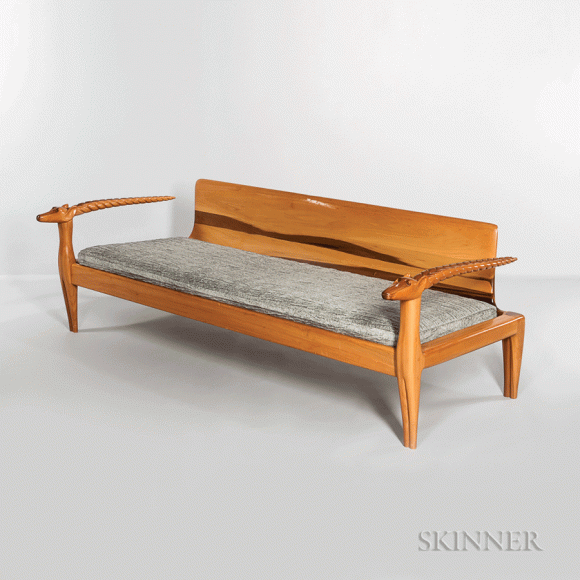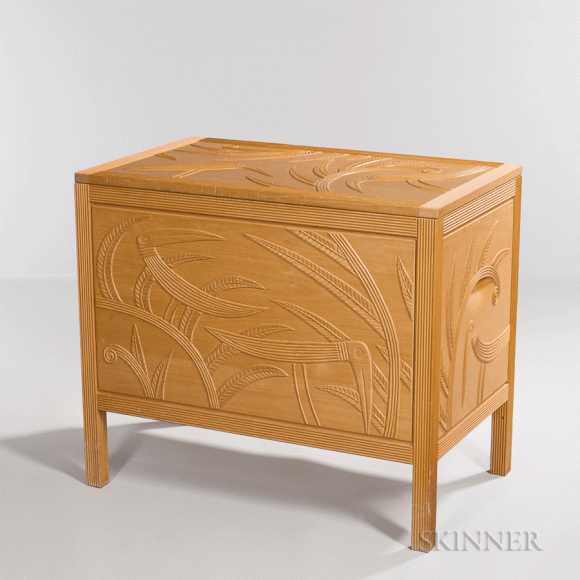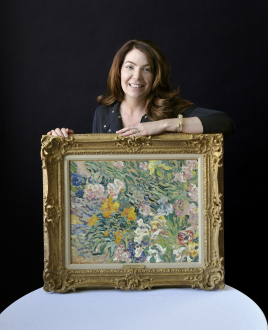“Studio furniture” describes an important creative movement that burgeoned in America in the 1960s. The term is shorthand for unique or limited production objects that combine imaginative design with functionality and fine workmanship. Those qualities characterize the work of Massachusetts-based studio furniture master Judy Kensley McKie.
McKie started young, helping her father, a graphic designer, in his hobby woodworking shop. Her formal training was in painting, at the Rhode Island School of Design. After graduating in 1966, she turned to woodworking out of necessity. With very little money and an apartment that needed furniture, McKie decided to make a table as a gift for her future husband.
That began the creation of a body of work that places her at the forefront of contemporary American furniture design. (Her artistry is not limited to furniture. Her genius is also expressed in drawings, prints, tiles, trays, bookends and wall sconces. The list is as limitless as her creativity.)
The 1960s and ’70s saw radical changes in art, politics and science. McKie was an active participant in that groundbreaking era of experiment and exploration. A spirit of fearless adventurousness has characterized her work from the beginning.
At this period, McKie joined with other countercultural activists in the New Hamburger Cabinetworks co-operative workshop in Roxbury, Massachusetts. The members taught and encouraged one another. Here and in a woodworking co-op that she helped found at Cambridgeport in Cambridge, Massachusetts, McKie honed her technical skills, taught herself how to carve and began to explore the organic sculptural furniture that has made her famous.
Beginning with tables and cabinets, McKie’s witty and whimsical furniture soon expanded to other forms — sofas, benches, chairs, stands and chests. A signature theme in almost everything she creates is zoomorphic form — elegantly abstract monkeys and dogs, birds and bugs, alligators and antelopes. However, it is the essence of the animal and not scientific replication that McKie seeks. She says of her own work, “If you can definitely identify the animal, I didn’t make the piece.”
McKie’s designs are perfectly aligned with the age of globalism. She acknowledges influences from around the world — African, Native American, Pennsylvania Dutch and Indonesian, to name a few. She is a time traveler as well. There are echoes in her work of ancient Greece and Egypt, pre-Columbian civilizations, the Italian renaissance, Scandinavian modern and Art Deco. Whatever their inspiration, the results are uniquely and unmistakably McKie originals — and how.
McKie is experimenting with materials and techniques as well as form and design. In most cultures and eras, wood has been the primary ingredient of furniture making. Not surprisingly, it is often her choice. But McKie also works in bronze, marble, resin, stone and steel. She uses paint, carving, stain, lacquer, pyrography (wood-burned decoration) — whatever means available to best express her artistic concepts.
McKie is often described as an exponent of art as furniture as well as furniture as art. By definition, studio craftsmen are artists as well as artisans, intimately involved in every aspect of what they make, from design to finished product. In McKie’s case, everything she creates is rooted in her early training in fine art.
Each piece begins with multiple drawings. McKie describes her rather idiosyncratic process this way: “You do a drawing, work everything out, cut all the parts and put them together, and then you start carving. As I see the shapes emerge from the pieces of wood, that’s the pinnacle of the creative process.”
The result is furniture that is fully functional and as well as sculptural. The chair is comfortable and meant to be used. The cabinet provides convenient storage. The console table suits its purpose of displaying a few prized decorative objects. At the same time each is a timeless and elegant work of art, at home in any home.
McKie has never created designs for mass production. Her aesthetics and her technical perfectionism are incompatible with that process. She does make some works in extremely limited editions, usually no more than a few dozen. Her pieces always involve a lot of handwork. Producing such limited editions allows her to achieve a balance between sufficient output to satisfy a growing market and her own need to keep imagining, inventing and moving on to a new idea.
For more, contact Katie at kwhittle@skinnerinc.com or 212-787-1114.






